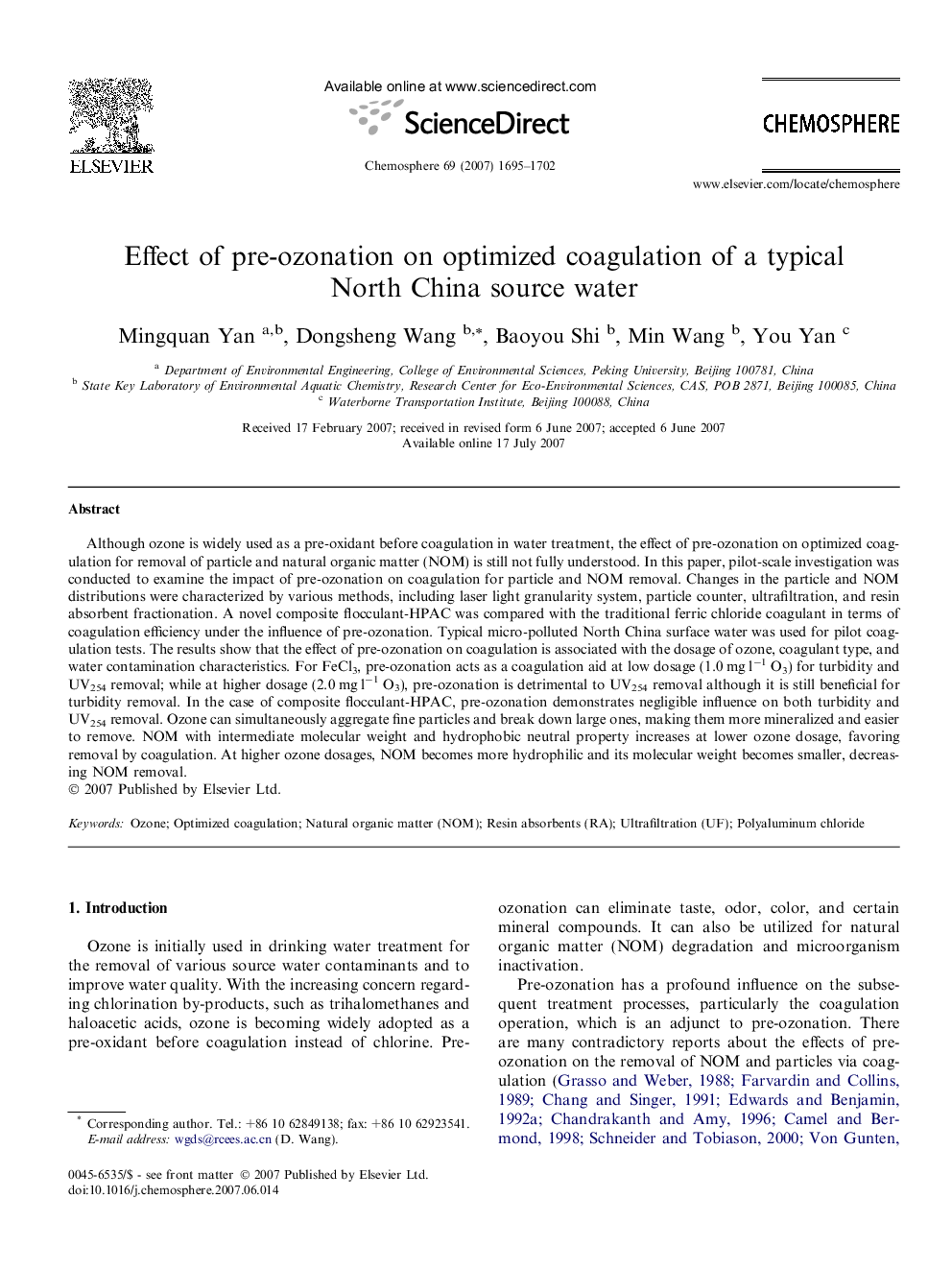| Article ID | Journal | Published Year | Pages | File Type |
|---|---|---|---|---|
| 4414987 | Chemosphere | 2007 | 8 Pages |
Although ozone is widely used as a pre-oxidant before coagulation in water treatment, the effect of pre-ozonation on optimized coagulation for removal of particle and natural organic matter (NOM) is still not fully understood. In this paper, pilot-scale investigation was conducted to examine the impact of pre-ozonation on coagulation for particle and NOM removal. Changes in the particle and NOM distributions were characterized by various methods, including laser light granularity system, particle counter, ultrafiltration, and resin absorbent fractionation. A novel composite flocculant–HPAC was compared with the traditional ferric chloride coagulant in terms of coagulation efficiency under the influence of pre-ozonation. Typical micro-polluted North China surface water was used for pilot coagulation tests. The results show that the effect of pre-ozonation on coagulation is associated with the dosage of ozone, coagulant type, and water contamination characteristics. For FeCl3, pre-ozonation acts as a coagulation aid at low dosage (1.0 mg L−1 O3) for turbidity and UV254 removal; while at higher dosage (2.0 mg L−1 O3), pre-ozonation is detrimental to UV254 removal although it is still beneficial for turbidity removal. In the case of composite flocculant–HPAC, pre-ozonation demonstrates negligible influence on both turbidity and UV254 removal. Ozone can simultaneously aggregate fine particles and break down large ones, making them more mineralized and easier to remove. NOM with intermediate molecular weight and hydrophobic neutral property increases at lower ozone dosage, favoring removal by coagulation. At higher ozone dosages, NOM becomes more hydrophilic and its molecular weight becomes smaller, decreasing NOM removal.
